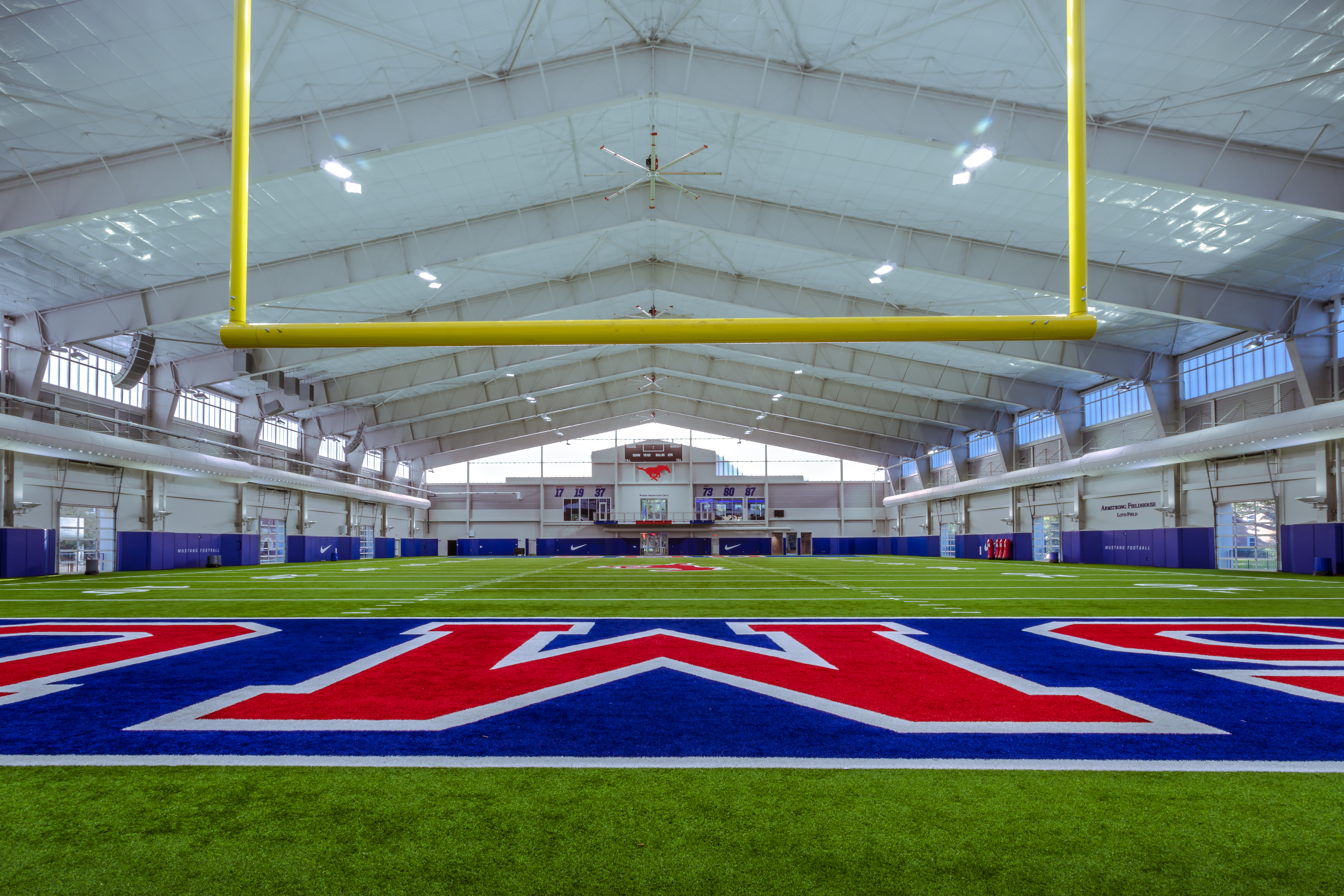
Armstrong Field House

Buildings consume large amounts of energy, water, and resources and account for 39% of total greenhouse gas (GHG) emissions globally. Continuing with SMU's commitment to environmental stewardship, all campus buildings pursue LEED certification.
Since its inception in 1998, LEED (Leadership in Energy and Environmental Design) certification is a globally recognized framework for the design, construction, and operation of high-performance buildings.
LEED certification requires projects to comply with all prerequisites and achieve credits from nine different categories that address land use, transportation, water, energy, materials and waste, health, and indoor environmental quality. Certified projects have successfully completed a third-party review process by the GBCI and are awarded points that correspond to the levels of LEED certification: Certified (40-49 points), Silver (50-59 points), Gold (60-79 points) and Platinum (80+ points).
All campus building’s capitalize on the connection to the campus and the community, energy efficiency, water conservation, and providing a healthy environment for students and faculty.
Project: Armstrong Field House
Architect: GSBS Architects
Contractor: Schwob
LEED Consultant: The Beck Group
Completion: February 2020
Size: 79.195 SF
Regular Occupancy: 203 (FTE, students, and visitors)
Use: Indoor Athletic Training Center
Project Description:
The Armstrong Field House supports SMU's commitment to high performance athletics. As a transformative presence on Bishop Boulevard, it features an indoor turf football practice field, as well as spaces for training, fitness, and entertainment. The facility enhances the student experience, elevates SMU's competitiveness, and serves as a facility resource for the entire campus community.
Project Highlights:
- The building is ideally situated to provide staff and students access to local neighborhood amenities and is within 265 feet of two DART Bus routes (Mustang Express Route 768 and Route 743). Being in a dense urban area helps reduced urban sprawl, reduces greenhouse gas emissions associated with driving, increases walking and physical activity, and encourages support of local businesses.
- Water conservation efforts focused on low flush and flow fixtures and water wise landscaping. These strategies result in a 32% indoor water use reduction and landscaping that uses 51% less irrigation. That’s a savings of over 95,000 gallons of water a year.
- SMU’s environmental stewardship extends to responsible sourcing of materials. Building materials were selected based on recycled content and distance from manufacturing location. The building is comprised of 14% of building materials having recycled content and nearly 61% of materials were extracted, harvested, and manufactured within 500 miles of the project site.
- Adhesives, sealants, paints, coatings, flooring, and engineered wood within the building meet strict VOC emissions requirements to reduce off-gassing.
- During construction, an Indoor Air Quality Management Plan was implemented to protect stored building materials from dirt, dust, particulates, and moisture. After construction, new high efficiency filters were installed in the building’s mechanical ventilation system and a green housekeeping plan was implemented to help maintain good indoor air quality.
- The university is also committed to reducing and recycling as much of their waste as possible. The contractor recycled over 96% of the waste generated during construction of the building. That’s 500 tons of materials diverted from the landfill that was able to be manufactured into new products. Additionally, the campus wide recycling program collects plastics, metals, paper, cardboard, glass, e-waste, batteries, and furniture for reuse and recycling.
- The building engineers implemented improvements to the building envelope, mechanical system, and lighting controls to reduce energy consumption. The building is 18% more efficient than similar building’s that were designed to minimum code requirements. To optimize efficiency, the project underwent building commissioning activities to ensure the building is running and operating as intended. These measures save approximately $16,000 a year in utility costs.
- To offset fossil fuel consumption and reduced greenhouse gas emissions, SMU purchased 2 years of renewable energy for 70% of the building’s predicted energy consumption.